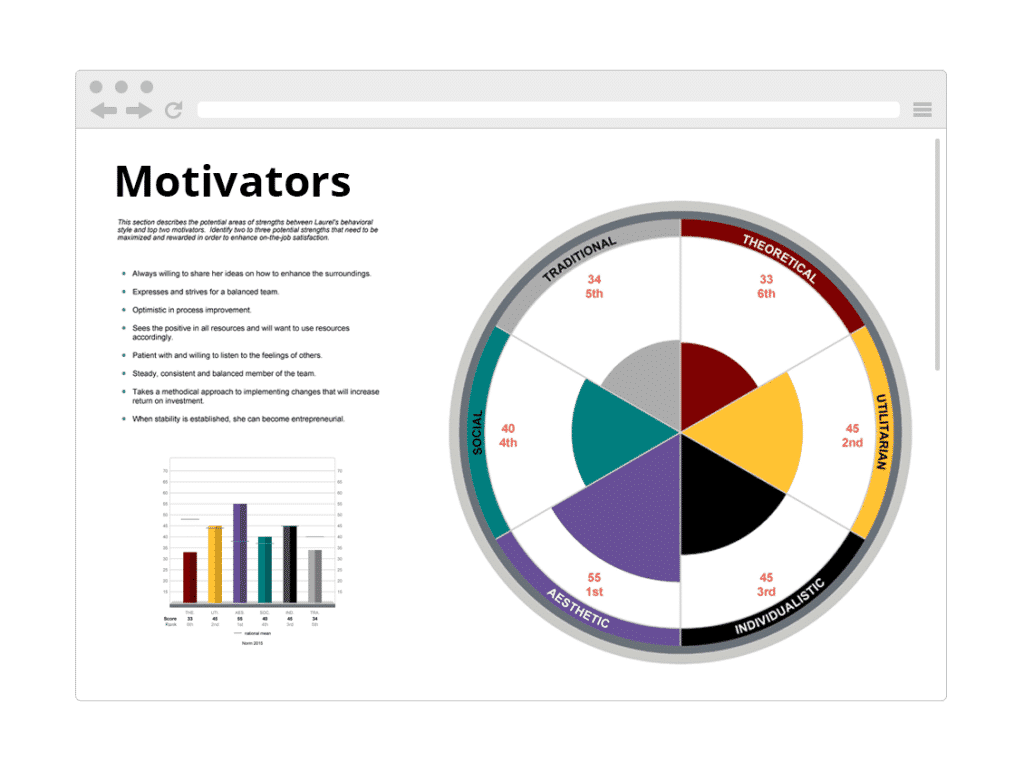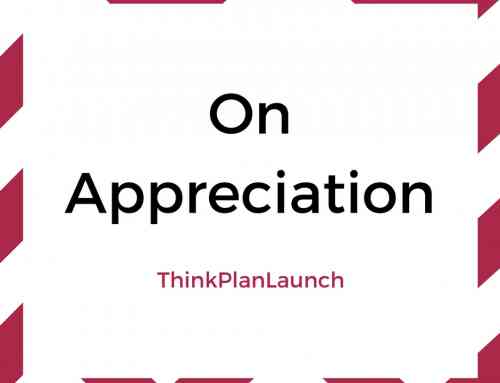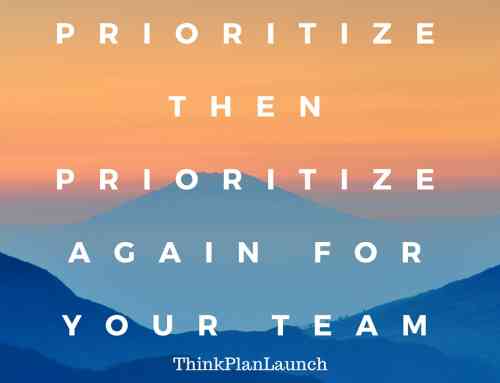Table of Contents
Intrinsic Motivation and Driving Forces Defined
Let’s talk about intrinsic motivation. In my industry, DISC tests and behavioral styles are “all the rage.” This is probably because they are easy to measure, understand, and apply with immediate effect.
The science that always interested me more, though, was Motivators – now termed Driving Forces.
Hidden beneath the surface, our Driving Forces rule our lives in deep and powerful ways. They affect our thoughts, decisions, and actions on a daily basis. Whereas DISC tells us “How” a person will behave, Driving Forces tells us WHY they will behave that way.
WHY did they quit their job? WHY does he/she act that way? WHY isn’t this person energized? WHY?!
Realize: the “How” and “Why” are two fundamentally different things – and in my opinion, understanding the “Why” is more useful than the “How” much of the time.
Of course, understanding both in combination is ideal. But the “Why” is important because it allows far greater depth when evaluating job fit, career paths, viability of long-term relationships, and so much more.
As a case in point, hiring accuracy is increased from 60% to 80% when adding Driving Forces to Behaviors in our patented job benchmarking process. Since traditional interview processes only result in 50% hiring confidence or less, this is a remarkable development.
The Original Six Motivators From Eduard Spranger’s “Types of Men”
TTI Success Insights created their modern-day Motivators assessment (the predecessor to their upgraded Driving Forces assessment) from the value attitudes originally proposed in Eduard Spranger’s Types of Men.
Spranger was a German philosopher and psychologist whose primary contribution to personality theory was his concept of value attitudes. His original six value attitudes were:
- The Economic – Primarily interested in what is useful.
- The Theoretical – Primarily interested in discovery of truth.
- The Aesthetic – Primarily interested in form and harmony.
- The Political – Primarily interested in power.
- The Social – Primarily interested in the love of people.
- The Religious – Primarily interested in unity.
When TTI formulated this into a validated assessment, it renamed some terms to keep up with contemporary vernacular:
- Economic –> Utilitarian
- Theoretical –> Theoretical
- Aesthetic –> Aesthetic
- Political –> Individualistic
- Social –> Social
- Religious –> Traditional
The definitions are mostly the same, but the language now fits modern usage better.
Moving From Six Motivators to Twelve Driving Forces
During 2015, the transition from six Motivators to a full twelve Driving Forces was initiated.
This is not because we discovered another six value attitudes to add to the original six. Rather, it is merely a reflection that each of the original six lie on a spectrum – and at each end of this spectrum, the extremes are unique enough to deserve their own definitions.
Let me make this even more clear.
With the original six value attitudes, or Motivators, we generally thought of them in terms of “high” scores. i.e., Did someone score “high” in Social? Are they a “high Utilitarian?”
This was accurate enough in itself, but it was all too easy to focus exclusively on high scores without considering the importance of low scores.
In fact, research has uncovered that people feel stronger about that which they are not than that which they are. That means it’s even more important to consider low scores. Someone scoring very low in a given Motivator could actually have that as their primary style if that low score is lower than a high score is higher.
For example, say someone scores 0/100 in the Utilitarian motivator and 85/100 in the Social motivator. With the old Motivators assessment, it would be tempting to say the person’s primary style is “High Social” – since that’s the line sticking up the highest on the graph – when in fact their true primary is “Low Utilitarian” (now called “Selfless” under the new Driving Forces).
Basically, the closer a person’s score is to either extreme (lots of energy or no energy) – the more powerful the Driving Force will be upon them.
A Brief Review of the Twelve Driving Forces
Now let’s briefly review the twelve Driving Forces in the context of their original six Motivators.
Resourceful (High Utilitarian)
The Resourceful person is driven by efficiency and practicality. They want to maximize their return on investment of time, talent, energy and resources. This can make them great business leaders and salespeople, but may also turn them into workaholics who use money as a scorecard.
Selfless (Low Utilitarian)
The Selfless person is driven by completing tasks for the greater good. They have little or no expectation of personal return on their investment. These people tend to be very generous and giving, but may waste time on irrelevant tasks or give without regard to personal circumstance.
Intellectual (High Theoretical)
The Intellectual person is driven by opportunities to learn, acquire knowledge, and discover the truth. They are excellent at researching and gathering information, especially when beginning new projects. However, their pursuit of knowledge may become so primary that basic matters (such as family, health, finances) are ignored or neglected.
Instinctive (Low Theoretical)
The Instinctive person is driven by utilizing past experiences and intuition to guide them. They will seek specific knowledge when necessary, and are good at “googling” things in a pinch. These folks tend to be comfortable starting projects without having all the information, which can be a blessing or a burden depending on the situation.
Harmonious (High Aesthetic)
The Harmonious person is driven by the “experience” – in particular, the subjectivity and balance in their surroundings. They value and enjoy beauty, form, and harmony, and will be most productive in an environment that “feels right.” These people excel at planning memorable events, parties, vacations, etc., but may struggle with the realities of every day life and see an unrealistic picture.
Objective (Low Aesthetic)
The Objective person is driven by the objectivity and functionality of their surroundings. They excel in chaotic situations and compartmentalize well, since they view everything in pieces (whereas the Harmonious style views the whole). Objective individuals are great at maintaining a realistic viewpoint of the world around them, but may miss the “experience” and unintentionally alienate those around them.
Commanding (High Individualistic)
The Commanding person is driven by power, status, and recognition. They have a drive for control over personal freedom and destiny, specifically their own! They are passionate about creating something that leaves a legacy, and will work long hard hours to achieve it. However, they may be controlled by their desire for success and place individual advancement over people.
Collaborative (Low Individualistic)
The Collaborative person is driven by supporting others and contributing without the need for recognition. Their focus is on the greater good rather than their individual advancement, and they are able to set aside their own agenda for the good of their group. However, they may pass up leadership opportunities and stifle their own growth when overextended.
Altruistic (High Social)
The Altruistic person is driven by service to other people. They tend to focus on the benefits they provide others, and may even “feel” themselves living within another person. When others are in pain, they are in pain. When others are happy, they are happy. They can instinctively notice when someone is in need and respond to them, but may be prone to win/lose relationships and harm themselves in pursuit of a cause.
Intentional (Low Social)
The Intentional person is driven to assist others for a specific purpose – not just to be supportive or helpful. Be careful not to read the word “selfish” into this one, because that’s not necessarily the case. The Intentional person sees the importance of keeping emotion out of business decisions, and will work hard to develop those who they feel deserve it. They may, however, see people more as an opportunity than as individuals.
Structured (High Traditional)
The Structured person is driven by traditional approaches and a defined system for living. They like proven methods and a “sure thing.” When they believe in a particular cause, they will work hard to advance it – but if they don’t, it’s unlikely they will help. Their high value on implementing and following systems can be a great thing, but so too this can lead to close-mindedness and a judgmental attitude towards others (namely those with differing beliefs).
Receptive (Low Traditional)
The Receptive person is driven by new ideas, new methods, and new opportunities. They do not have a defined system for living and may never have one. Their minds are constantly open, exploring the possibilities and the vast unknown. This makes them highly creative, and many are “outside-the-box” thinkers. The pitfall to being a high Receptive person, though, is that their need for constant change can undermine stability, consistency, and process.
Which Driving Force Best Describes You?
I’ll give you a hint: My top driving force is Receptive.
My next two are Intellectual and Resourceful. What do you think yours are? If you’d like to know for sure, simply schedule and take our Talent Insights assessment to find out!
Remember, too – it’s harder to identify a person’s Driving Forces than it is their Behavioral Style (DISC). You have to look at how they spend their money, how they make decisions, and how they apply judgments to people and things around them. Only then can you start piecing the puzzle together.
This means you have to know someone pretty well just to get a rough idea of their Driving Forces. Of course, taking an assessment is still the most expedient and accurate way to identify someone’s Driving Forces.





Leave A Comment